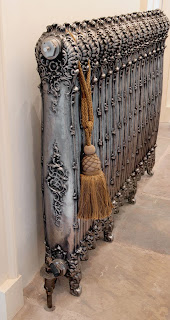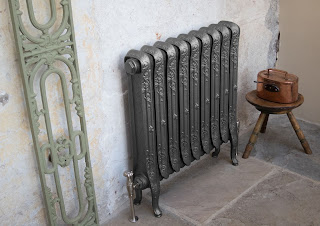Cast Iron Radiators have undergone a rise in popularity over the last few years. In some respects it is partly due to a broader demand for genuine antiques or classic & vintage inspired goods – the charm of classic design or certain styles/periods is surging, as is the want of higher quality production and an extended product lifespan.
It may also be because of straightforward aesthetics. Simply, the majority of cast iron radiators and the finishing options that are available make for wonderfully decorative additions to the home and are visually appealing to many.
Another factor is likely to be the added advantage of cast iron radiators retaining and emitting heat for longer periods.
Radiators, be they cast iron or even the modern day steel
counterparts, have become an everyday installation in almost every home up and
down the country, but it is not always understood how they work.
Here at Trads we want you to appreciate how your cast iron radiator will perform and what makes them so special.
Here at Trads we want you to appreciate how your cast iron radiator will perform and what makes them so special.
How Radiators Work: A
Simple Guide.
In an ordinary hot water system, the radiator is
filled with water. As the heating system increases the temperature of the water
and circulates it through the system, radiators will heat up. The unique properties of cast iron help as it conducts heat rather well, and its thickness means it can retain large amounts of heat that gets slowly released and emits the warmth into the atmosphere (room) even after the heating is turned off. Thus, cast iron radiators offer an efficient and long lasting heating solution.
The heat output of our cast iron radiators is determined by the surface area, in layman’s terms the bigger the hotter. Because of the thickness of the material, radiators made from cast iron will heat air at a steadier rate and avoid the peaks and troughs or ‘start/stop’ nature of modern day radiators.
|
Did
you know?
Because of the thermodynamic properties of cast iron and its capacity
to retain a great deal of heat, Cast Iron was famously used in the original
manufacture of the cylinders in steam engines,
and more specifically used by John Wilkinson in the steam locomotives of
James Watt.
|
Stay tuned for more blogs coming from Trads.
Do you have any questions? Do you have a subject for us to tackle?
Let us know in the comments! Thanks for reading.
Do you have any questions? Do you have a subject for us to tackle?
Let us know in the comments! Thanks for reading.


No comments:
Post a Comment